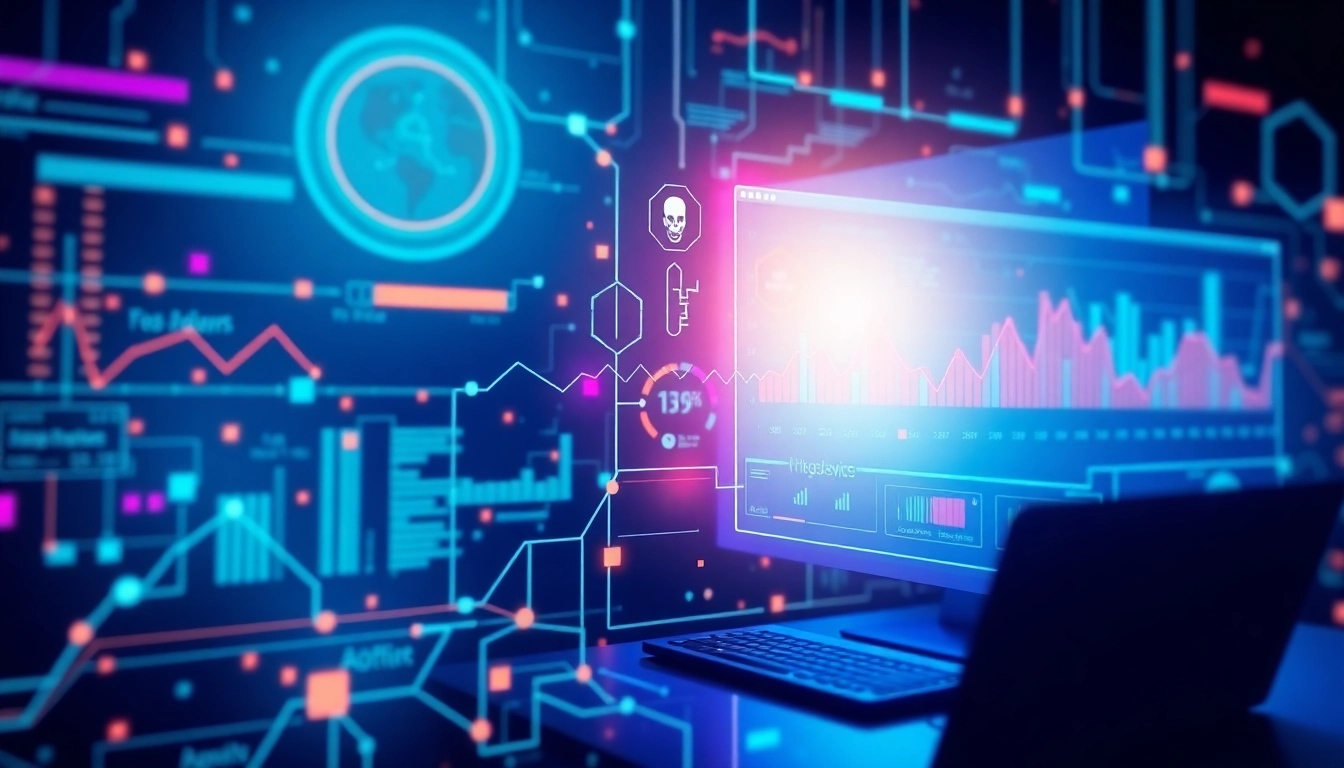1. Introduction to Informatics
1.1 Definition and Overview
Informatics can be defined as the interdisciplinary study of the design, development, and application of information technology. It focuses on how we can use data, information, and knowledge to improve our understanding and management of complex systems, especially in the realms of healthcare, education, and organizations. As we stand at the intersection of people, technology, and information, informatics represents a transformative discipline that encompasses a variety of subfields, including computer science, cognitive science, and information science. According to the American Medical Informatics Association, informatics plays a crucial role in improving human health and healthcare delivery through the effective use of data.
1.2 Importance in Today’s World
In the rapidly evolving world shaped by technology, the importance of informatics has surged dramatically. Healthcare informatics, in particular, has revolutionized how clinical data is acquired, shared, and analyzed. With the advent of Electronic Health Records (EHRs), clinical decision support systems, and telemedicine, informatics is enabling better patient care, enhancing efficiency, and reducing costs. The significance of this field extends beyond healthcare, impacting various sectors such as education, business, and even government. At its core, informatics improves decision-making, facilitates knowledge sharing, and enhances the quality of life for individuals and societies.
1.3 Key Terminology in Informatics
Understanding informatics requires grasping certain key terms:
- Data: Raw facts and figures without context.
- Information: Data that is processed and organized to be meaningful.
- Knowledge: Information that is combined with comprehension and interpretation.
- Health Informatics: A specialized branch focusing on managing and optimizing health information.
- Clinical Decision Support Systems (CDSS): Tools that assist healthcare providers in making clinical decisions.
2. History and Evolution of Informatics
2.1 Early Developments in the Field
The roots of informatics trace back to the early days of computing in the 1950s and 1960s when computers were first developed to handle large amounts of information. One of the earliest examples of informatics application is the use of computers for managing biological and clinical data in the medical field. Pioneers like Claude Shannon and Norbert Wiener laid the theoretical groundwork for how data and information could be processed and applied.
2.2 Growth Trajectories in Healthcare
As the healthcare sector began adopting information technology, the 1980s and 1990s saw a significant increase in the development of clinical data systems. With the introduction of EHRs, healthcare organizations could digitize patient records, making data more accessible and manageable. This transition marked a turning point, facilitating better patient outcomes through enhanced communication, increased efficiency, and improved data analysis capabilities.
2.3 Modern Innovations in Informatics
Today, informatics has evolved to incorporate cutting-edge technologies like artificial intelligence (AI) and machine learning. These advancements are streamlining processes, personalizing patient care, and enhancing predictive analytics in clinical settings. Innovations such as blockchain technology for secure data sharing and big data analytics for population health management are on the rise, signifying a vibrant future for informatics.
3. Applications of Informatics in Healthcare
3.1 Electronic Health Records (EHRs)
EHRs represent one of the most widespread applications of informatics in healthcare. By digitizing patient records, EHRs facilitate the seamless flow of information among healthcare providers. They enhance care coordination and reduce the risk of errors associated with manual record-keeping. Moreover, EHRs often come equipped with decision support tools that can alert clinicians about potential issues like drug interactions or allergies, ultimately leading to better patient safety.
3.2 Clinical Decision Support Systems (CDSS)
CDSS are crucial informatics tools that provide healthcare professionals with evidence-based recommendations at the point of care. By analyzing patient data against a predetermined knowledge base, CDSS can assist providers in diagnosing conditions, suggesting treatments, and determining appropriate interventions. Research shows that implementing CDSS can lead to improved patient care outcomes, highlighting their essential role in health informatics.
3.3 Telemedicine and Remote Monitoring
Telemedicine has increasingly become an integral part of healthcare delivery, especially in response to the COVID-19 pandemic. It allows healthcare providers to remotely diagnose, treat, and monitor patients using digital communications technology. Informaticians play a critical role in designing these systems, ensuring they are user-friendly, secure, and capable of integrating with existing healthcare data systems. Remote monitoring tools equipped with IoT (Internet of Things) devices provide real-time health data, enabling more proactive patient management.
4. Challenges and Best Practices in Health Informatics
4.1 Overcoming Data Privacy Issues
Data privacy remains one of the biggest challenges facing health informatics. With the vast amount of sensitive patient data being processed, maintaining confidentiality while still allowing for data analysis is a fine balancing act. Organizations need to implement robust encryption techniques and comply with regulations like HIPAA (Health Insurance Portability and Accountability Act) to protect patient information adequately. Regular audits and staff training are also essential in cultivating a culture of privacy.
4.2 Integrating New Technologies Effectively
The integration of new technologies into existing systems poses a considerable challenge for many healthcare organizations. Often, disparate systems lead to inefficiencies and data silos. To mitigate these issues, organizations should adopt standardized data formats and invest in interoperable systems that facilitate seamless data exchange. Health information exchanges (HIEs) are instrumental in promoting collaboration and sharing data across platforms.
4.3 Best Practices for Implementation
Successful implementation of informatics solutions requires a strategic approach. Organizations should emphasize stakeholder engagement during the planning phase to ensure systems meet user needs. Comprehensive training programs must follow the deployment of new technologies to equip staff with necessary skills. Finally, continuous evaluation and improvement processes should be in place to adapt to evolving technologies and patient needs.
5. Future Trends in Informatics
5.1 AI and Machine Learning in Informatics
The future of informatics is undoubtedly intertwined with advancements in artificial intelligence and machine learning technologies. These tools can analyze vast datasets to identify patterns, trends, and predictive analytics, which can be invaluable in the healthcare context. For instance, AI can enhance clinical decision-making by offering personalized treatment recommendations based on patient history and real-time data. The widespread adoption of AI is anticipated to improve operational efficiencies and patient outcomes significantly.
5.2 Innovations Shaping Patient Care
Innovations in informatics are also shaping patient care models. The integration of remote monitoring, wearable devices, and health apps creates a more holistic view of a patient’s health journey. Such tools empower patients to take an active role in their health management, resulting in shared decision-making between patients and providers. The trend towards value-based care, where compensation is tied to the quality of care provided rather than the quantity, will enable healthcare systems to leverage informatics to enhance outcomes and experiences.
5.3 Preparing for the Future of Healthcare
As informatics continues to evolve, preparing healthcare professionals for the future is crucial. Educational institutions must integrate informatics training into their curricula to equip future healthcare providers with necessary skills. Lifelong learning and professional development initiatives will be essential to keep current practitioners abreast of emerging technologies and best practices in informatics. The evolving landscape of healthcare demands that professionals in the field remain adaptable and innovative.
For more resources and insights on informatics, you can visit https://www.informaticsview.com. This platform serves as a valuable resource for those looking to delve deeper into the world of informatics and its applications across various sectors.



